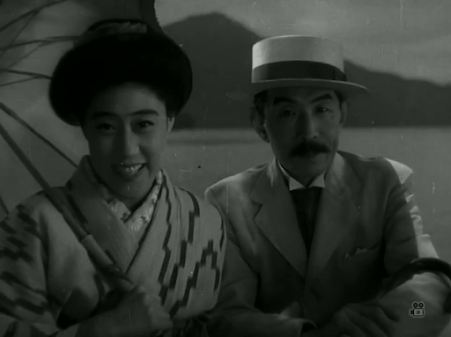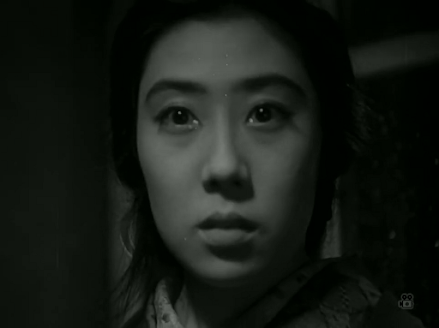Obscure Japanese Film #66
 |
| Isuzu Yamada |
Sumako Matsui (1886-1919) was an actress who became the first major female star of shingeki, a Japanese theatre movement which sprung up in the late Meiji era and mainly staged Western plays in translation without transposing them to a Japanese setting. In other words, the actors would be dressed in Western clothes and often blonde wigs to perform works by playwrights such as Ibsen and Shakespeare. This may seem odd – after all, there’s no equivalent Western theatrical movement in which actors perform Asian plays in translation – but it should be remembered that Japan had isolated itself for over 200 years prior to the arrival of United States Commodore Matthew C. Perry in 1853 (which led to the Meiji Restoration of 1868), so it was a movement borne out of a natural curiosity about foreign culture. Before the emergence of shingeki, Japanese theatre had consisted almost entirely of kabuki, Noh and bunraku, all of which had persisted for centuries with little change. The shingeki movement eventually came to include new works written by Japanese dramatists in a more realistic Western style with contemporary Japanese settings. Unsurprisingly, during the war years, shingeki was suppressed by the Japanese authorities as anti-patriotic, but when the Americans occupied the country after the war, they actively encouraged its revival.
In 1947, Shochiku studios produced Kenji Mizoguchi’s The Love of Sumako the Actress starring Kinuyo Tanaka in the title role, while Toho produced this film about Sumako Matsui, directed by Teinosuke Kinugasa and starring Isuzu Yamada. That two rival companies hit on the same subject at the same time is probably not in this case because they thought a film about Matsui would be box office gold – after all, the popularity of shingeki was largely limited to intellectual Tokyo-ites. The more likely reason is that, during the American occupation, the film studios in Japan were restricted in their choice of subject matter, but could be sure of enthusiastic approval for films which promoted Western values, as any story set in the world of shingeki was bound to do.
In Actress, we first meet Sumako when she is still going by her real name of Masako Kobayashi. A country girl with two failed marriages behind her, she joins a shingeki theatre school but is not a good student at first – she snacks in class and doesn’t do her homework. However, after a stern reprimand, she changes her attitude and begins to put more effort in than any of the others. This soon pays off and, much to the disgust of the other female students, she is rewarded with the lead role of Nora in A Doll’s House. She is a success in the part and grows close to her teacher, Hogetsu Shimamura (Yoshi Hijikata), who believes in her despite the attempts of Sumako’s fellow students to undermine her at every opportunity. Sumako and Shimamura begin having an affair, but tragedy strikes when he falls ill.
Kenji Mizoguchi’s version of this story is one of his more minor works and he reputedly said that he preferred Kinugasa’s longer film to his own. Running nearly two hours, Actress feels a little too long and the rather niche shingeki theme hasn’t dated terribly well. However, as a vehicle for Isuzu Yamada, it could not be better as we not only see her transformation from naive country bumpkin to sophisticated actress, but she gets to run the gamut of emotions and appear in a variety of stage roles as well. Yamada is excellent as always and is better casting in this role than Kinuyo Tanaka, being closer to the correct age and having a stronger resemblance to the real Sumako.
Director Teinosuke Kinugasa is best known for A Page of Madness (1926) and Gate of Hell (1953). This is a lesser film – it’s well-made, but not exceptionally so, although it should be remembered that Japanese directors were still working with limited resources in 1947 and the quality of the country’s cinema would improve significantly over the coming years.
IMDb states that Kinugasa was at one time married to Isuzu Yamada, but this is incorrect –Kinugasa was married to someone else when he had an affair with Yamada which lasted from 1946-50 and was therefore in progress during the making of this film.
Among the supporting cast, the most familiar are the omnipresent Masao Mishima as a stagehand and Takashi Shimura in a very minor role as the owner of the building in which the school holds lessons.
Watch on YouTube (with imperfect subtitles).







No comments:
Post a Comment